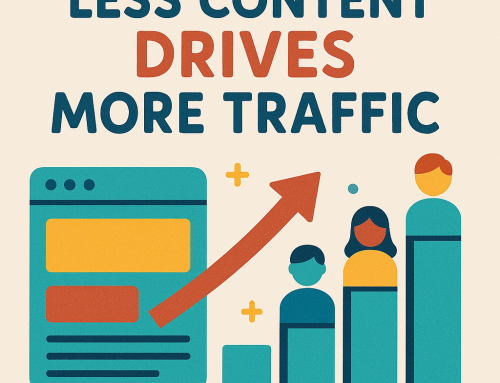 Search engine optimization (SEO) is a volatile and ever-changing field. As we head toward 2013, a number of trends in the industry begin to emerge. The following five trends will have an impact on SEO in 2013.
Search engine optimization (SEO) is a volatile and ever-changing field. As we head toward 2013, a number of trends in the industry begin to emerge. The following five trends will have an impact on SEO in 2013.
Content Continues to Dominate
Let’s get the obvious out of the way; informative, well-written content will remain the most powerful SEO weapon we’ve got. As Google continues to refine its algorithms, the search engine becomes ever more proficient at identifying relevant content.
Keywords will remain important but will need to be used with an increasingly light touch. Simply peppering an article with keywords doesn’t work now, and it certainly won’t win any SEO contests in 2013. One of the most promising signs in ‘SEO company reviews’ () is a commitment to quality content.
Marketers spent $16.6 billion on electronic content writing in 2011, with good reason. No matter how highly optimized your site is in other areas, without content you’ll disappear into Google obscurity (which, practically speaking, means any ranking not on the first page of search results).
SEO Will Outperform PPC, but Many Won’t Notice
While marketers wisely invest in electronic content, they have a bit of a blind spot when it comes to SEO and PPC budgets. According to GroupM and Nielsen surveys, 95 percent of users click through on organic search results, a clear sign that SEO generates leads.
Google itself reports 75 percent of clicks on a search results page go to organic listings, with only 25 percent clicking on PPC ads. In light of these results, you’d think marketers would focus their search market budgets on SEO.
You’d be wrong. Forrester’s U.S. Interactive Marketing Forecast suggests marketers will spend 88 percent of their budget on PPC through 2013 and 2014, leaving only 12 percent for SEO.
The reason for this is a little unclear but possibly due to that most human of needs, the quick fix. PPC provides rapid results, although pay-per-click profits can soar and plummet within days. SEO takes longer to set into motion and takes time to produce a continuous return on investment. Once established, however, SEO proves more enduring and more reliable than the volatile world of PPC.
Social Media Optimization
Social media’s importance as a marketing tool continues to grow. Visual marketing through Pinterest gained traction in 2012 and is likely to increase even more in 2013.
Marketers should keep an eye on Google+. While Google’s social network had a lackluster launch, Google+ has begun to produce significant traffic. This isn’t surprising; it only makes sense for Google to favor its own product in search results.
Expect to see more businesses engaging in video marketing as well. YouTube is, after all, the second most-used search engine. And Google owns YouTube, so a video with good optimization and carefully chosen tags performs well on both platforms. Combine the ability to share videos on social media with the possibility of a video going viral, and YouTube marketing has the potential to generate significant leads.
Mobile Searches
Mobile devices continue to pursue their vision of global domination; sometimes it seems the mobile juggernaut won’t rest until we’re handed our first smartphone at birth. Marketers are still adapting to mobile searches, which tend to be local in nature and highly actionable. People can browse a brick-and-mortar store with phone in hand, comparing store prices with regional and online competitors.
Such searches offer significant opportunities for marketers, but we’re still learning how to best leverage those searches into consistent lead generation and sales. A mobile version of your website, optimized for the longer, more regionally oriented keywords used in mobile searches, is essential.
Mobile websites should load quickly; you’re trying to attract the attention of people on the go, so your window of opportunity to grab their attention is smaller than for computer browsers. Google is also recommending webmasters use responsive web design that adapts site content to the viewers’ screens.
Responsive web design (RWD) allows you to use the same website for mobile and fixed devices but does require an experienced JavaScript programmer. RWD has some limitations as well; banner ads and embedded videos do not adapt well to resizing.
Voice Searches and SEO
Apple’s virtual assistant, Siri, proved very popular in 2012, for both her usefulness as a mobile search tool and her tendency to occasionally produce hilariously wrong answers to questions. Google’s vocal update of its little-used Google Search App indicates the search engine takes Siri, and vocal searches, very seriously.
What can we expect to see in 2013? Keywords remain vital for mobile searches, but we need to remember that people don’t talk the same way they type. As vocal search tools evolve, we’ll see slightly different keywords develop when compared to type-based searches.
Siri doesn’t just hunt Google Search. When asked to find local search results she also checks user reviews on Google Places and Yelp. Localized SEO is going to include a strong presence on these sites. Expect to see a fair bit of black-hat shenanigans in this area. Fake reviews are already rampant online, and searches influenced by user reviews will just increase the temptation to fake reviews.
A Pinch of Salt
One last thought on emerging SEO trends — remember these are just predictions. A new social media platform, changes to Google algorithms or advances in virtual assistant searches could disrupt the SEO market and completely reverse some of these trends. Your best strategy heading into the new year is to keep your ear to the ground for changes in the SEO market and be ready to change tactics as needed.





